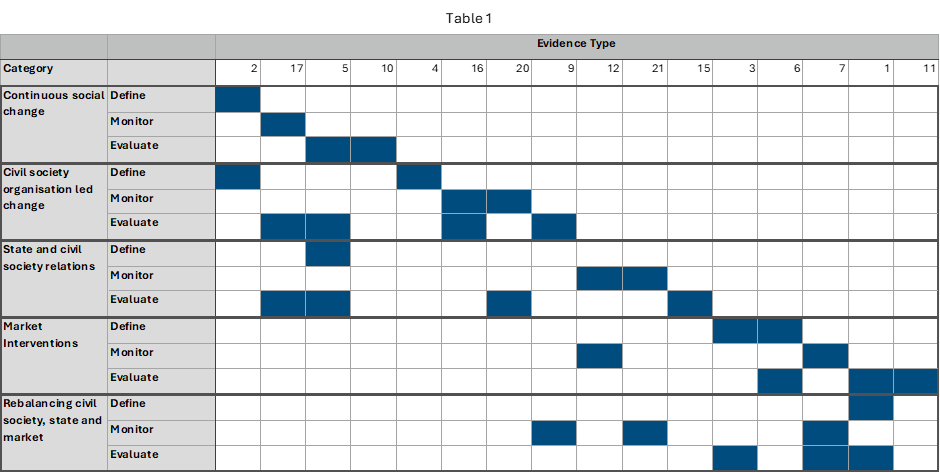Patterns of evidence use in place-based work
The evidence use supports the categories
Our analysis is not complete. Our list of evidence types is a work in progress. Our review of the methods used in different kinds of place-based change has been rapid.
The detail will change. But some conclusions are clear.
The following diagram summarises how the five broad categories of place-based change use the 21 types of evidence in our non-exhaustive list. We separate the use of evidence into three stages. That need to define the problem. That needed to monitor progress. And that needed to evaluate progress.
The diagram shows that the pattern of evidence use differs by category. Which is to say, the use of evidence reflects the different mechanisms of change in place-based work.
Our next post will provide some observations about the relationship between the evidence and the categories.
Key to our evidence types:
Population demography/epidemiology
Historical data
Spatial analysis (e.g. CCTV)
Socio-legal data
Administrative data (e.g. analysis of case files or LA/ICB statistics)
Combining/Re-analysis/ mining of existing data sets
Economic models
Cohort/longitudinal
Qualitative methods
Ethnography
Survey Data
Pre-post tools
Observations
RCT/Nested RCTs
Propensity Score Matching
Social network analysis (cf Christakis)
Peer to peer research
Social media analysis (e.g. of Facebook/Twitter/WhatsApp groups)
Natural Language Processing (e.g. of conversations/written text)
Learning partnerships
Real time process/Outcome data





